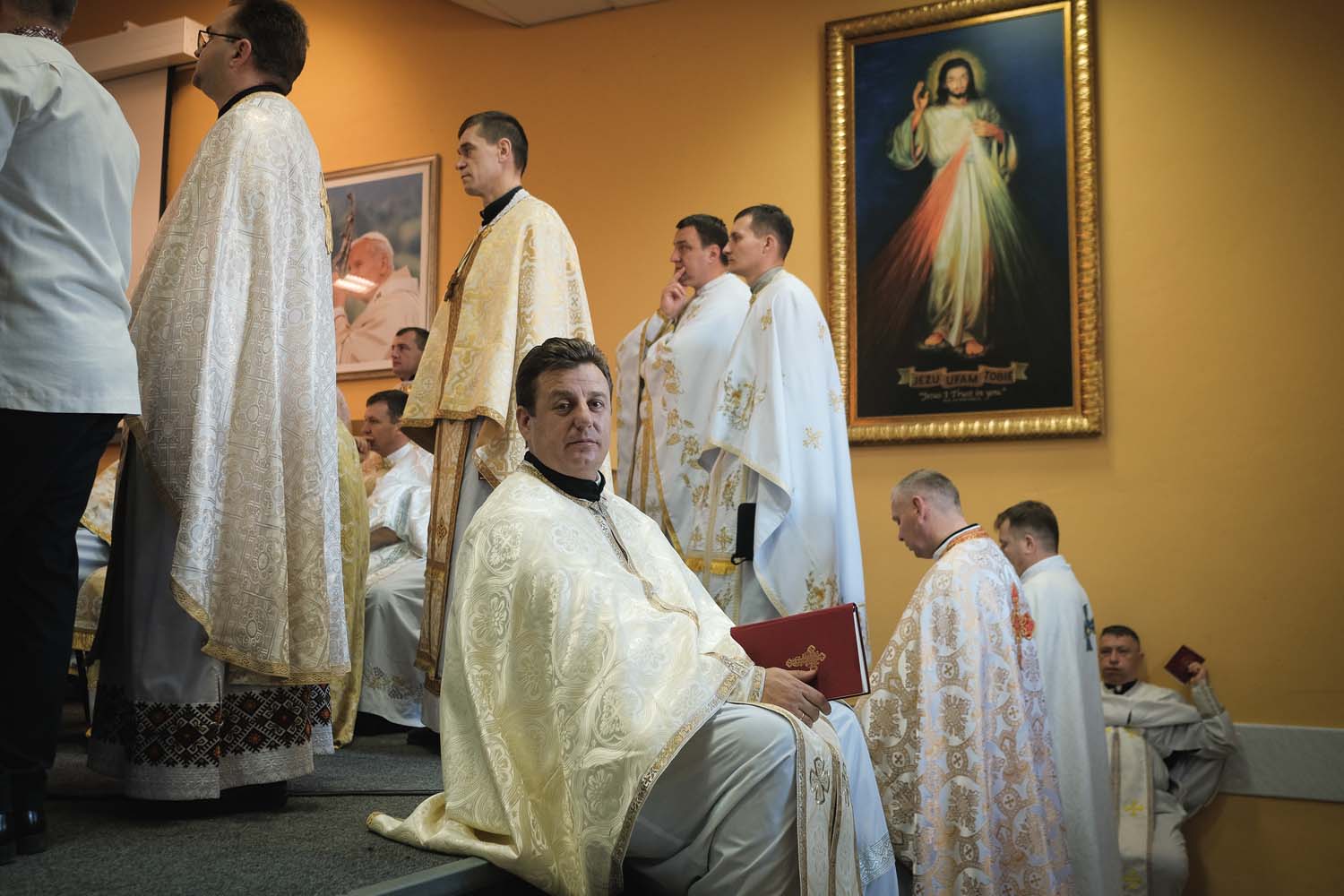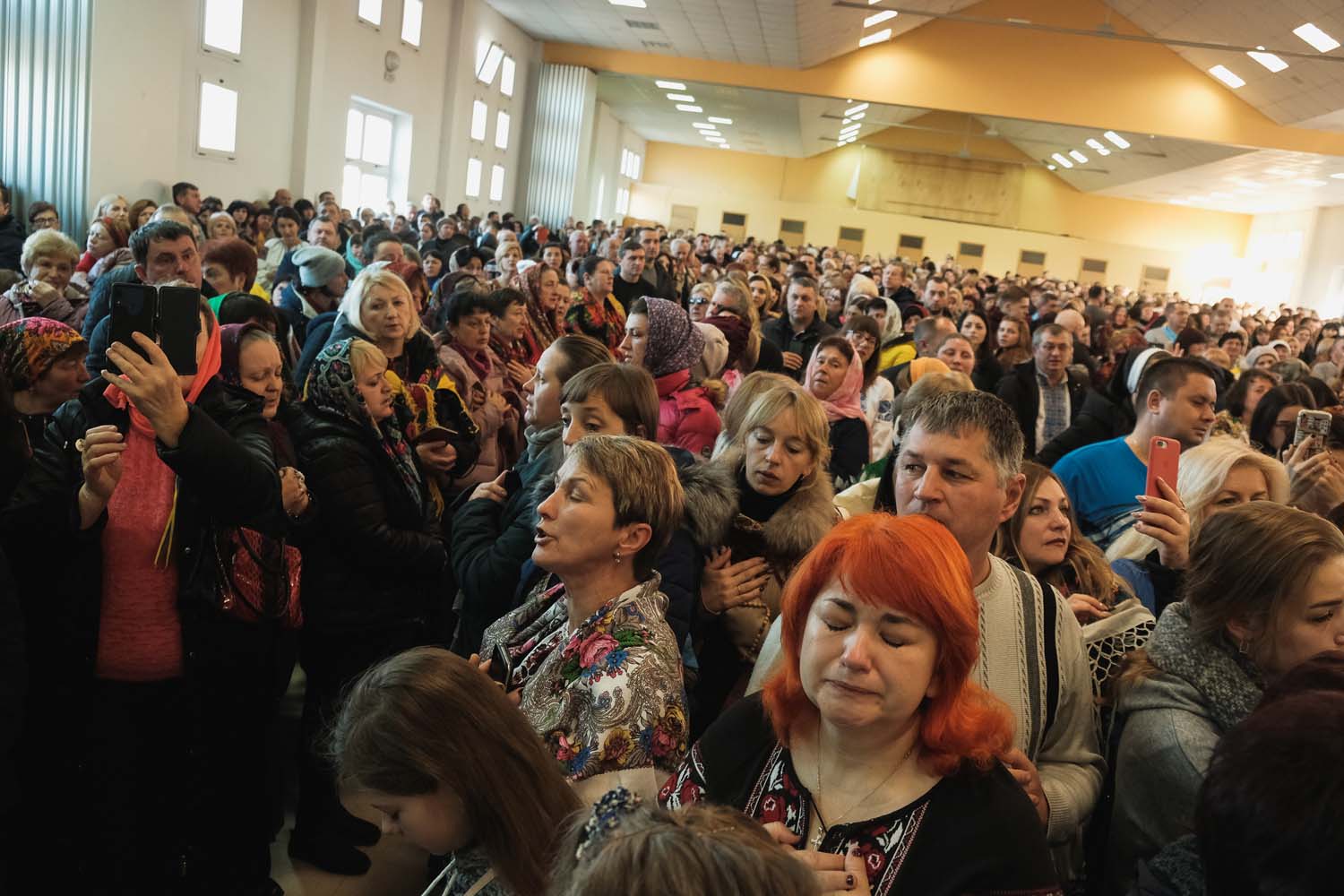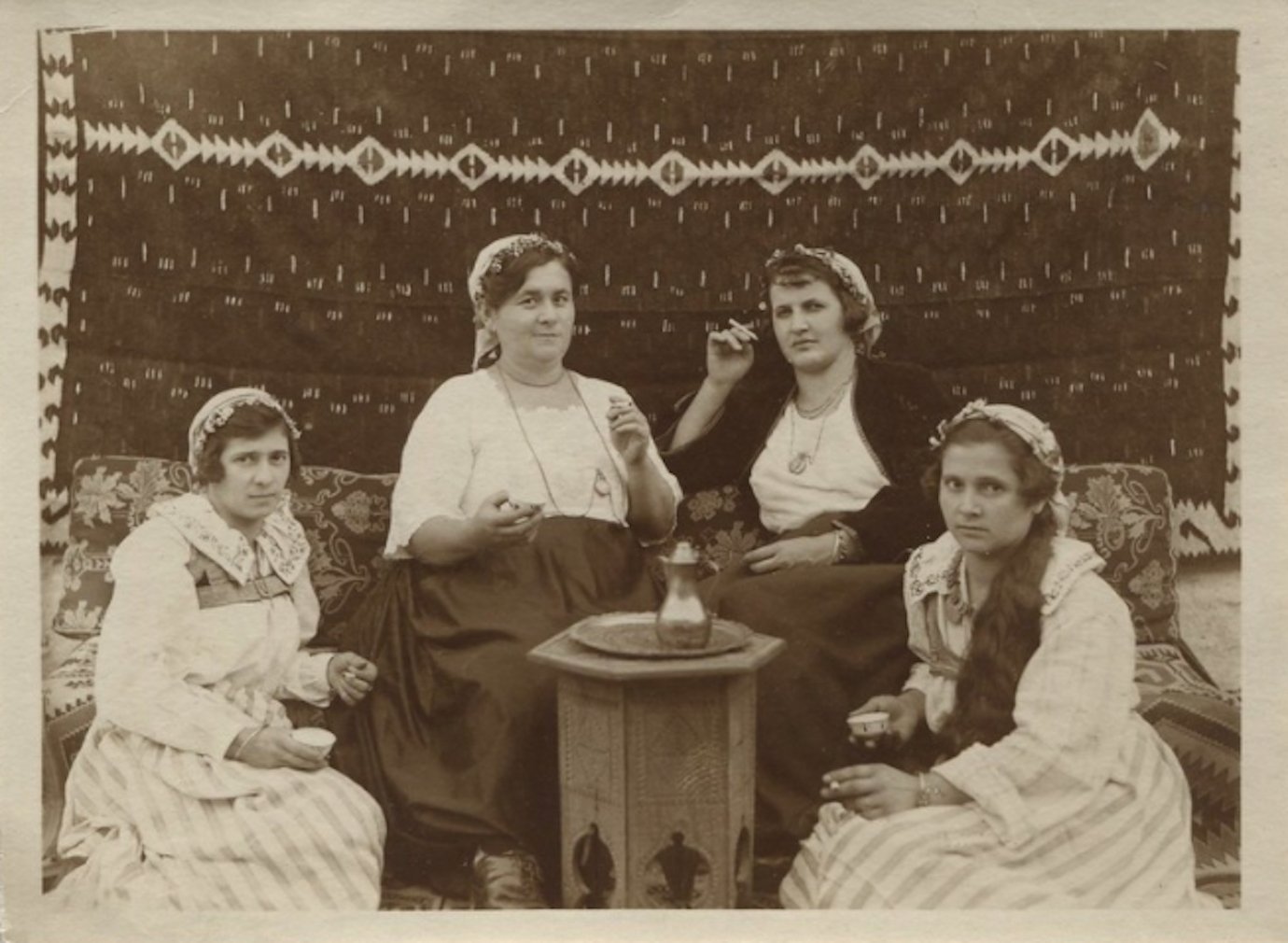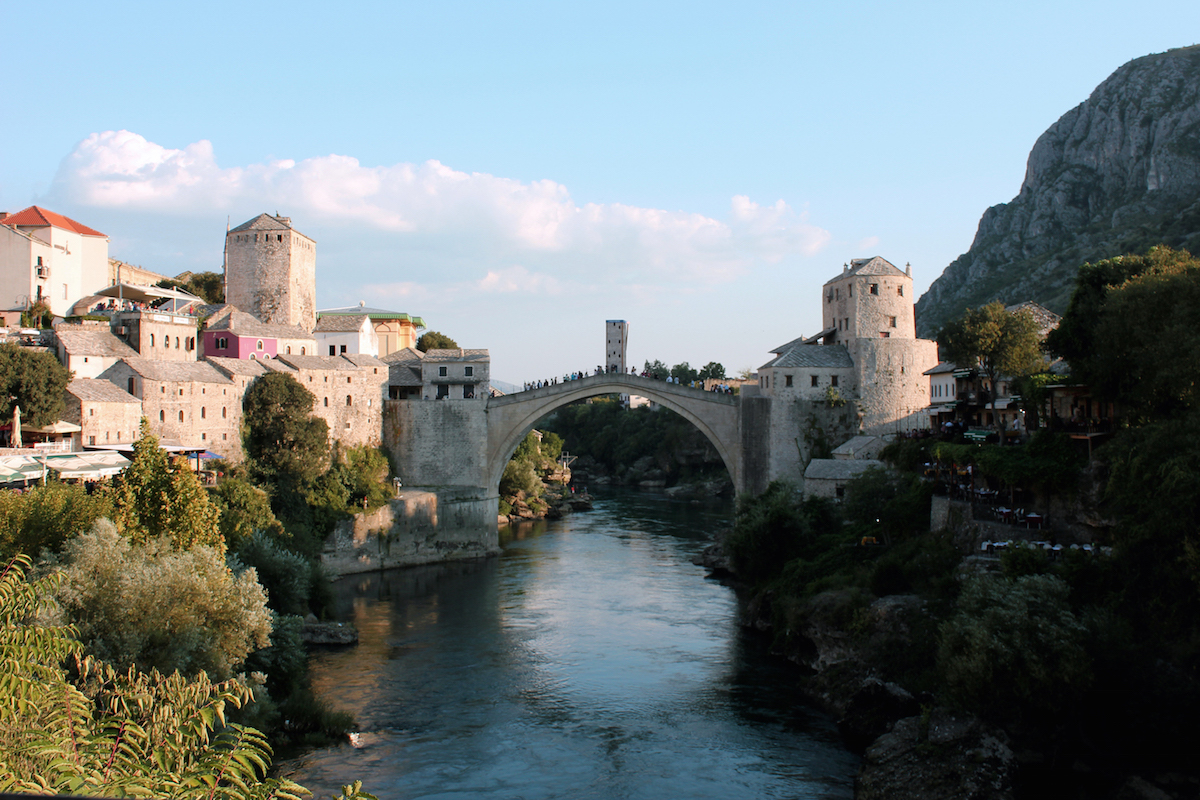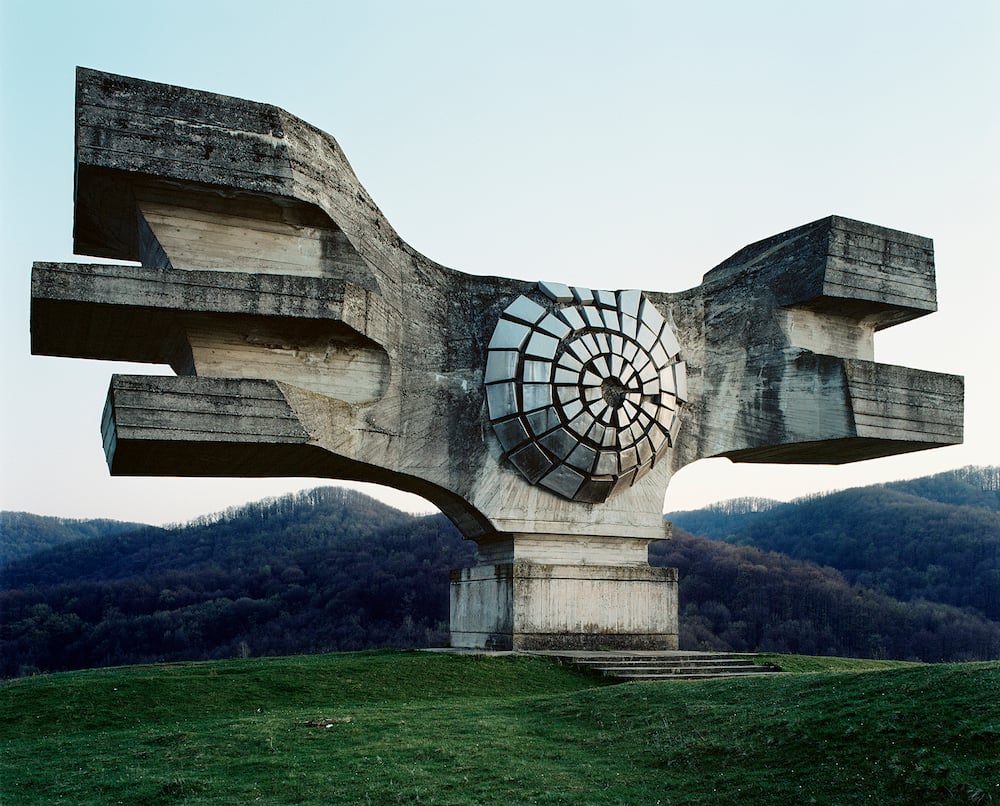Without tourists, Bosnia’s Catholic pilgrimage site has turned into a ghost town
Medjugorje, just southwest of Mostar in modern day Bosnia and Herzegovina, was a quiet Yugoslav town when, in 1981, the Virgin Mary allegedly appeared to six local children.
Soon, pilgrims began arriving at Medjugorje, much to the dismay of Yugoslav authorities, who were dubious of anything that would stoke instability in the nominally secular state — particularly just a year after the death of the country’s enigmatic socialist leader, Josip Broz Tito.
Medjugorje means “between two mountains” because it is situated between Križevac and Crnica.
Pilgrims walk towards the site where the Virgin Mary allegedly appeared in 1981. Taken in November 2019.
Many ordinary Yugoslavs were also wary of Catholicism. Some still remembered the involvement of members of the Catholic Church in atrocities committed by the Uštasa (a Croatian fascist movement that allied with Nazi Germany) during the Second World War, including forced conversions, deportations, and massacres. Afraid the events at Medjugorje would become conflated with some newfound Croat nationalism or neo-fascist ideals, the Yugoslav authorities immediately denounced the apparitions as a hoax.
But this did not deter many thousands of worshippers from visiting Medjugorje. With Yugoslavia entering an economic crisis, by the mid-80s authorities warmed to the idea of Medjugorje becoming a tourist hub, and the money this would bring.
The flow of Catholic pilgrims to Medjugorje did not stop even during Bosnia’s 1992-95 war
The flow of Catholic pilgrims to Medjugorje did not stop even during Bosnia’s 1992-95 war. It was thanks largely to the tourism and pilgrimage industry that the area around Medjugorje was one of the fastest to recover after the conflict, making it into something of a symbol of revival. Each year, more than a million people will climb the site of the visitation, known as Apparition Hill. A statue of Mary now sits atop the hillside, with smaller shrines scattered along the ascent. Among the town’s landmarks is Križevac, directly opposite Apparition Hill, recognisable by its white concrete cross, and St James’ Church, which dominates the town centre.
It wasn’t the Virgin Mary, but rather a pint of Guinness, that brought Nick St. Oegger to Medjugorje in October of 2019. “A friend in Sarajevo told me I’d have to go down to Medjugorje for it,” explains the photographer, who has been working in the Balkans since 2013. “Because there were usually so many Irish pilgrims among the visitors, a few of the pubs and hotels had started offering Guinness on tap,” he continues. So, on his first visit, he stopped by the Irish Centre “where you could order a full Irish breakfast, a Guinness, and Barry’s Tea” and “they had RTÉ playing on the TV.”
His visit was perfectly timed: it wasn’t until 2019 that Medjugorje became recognised as a sanctioned pilgrimage (although the Vatican still won’t certify the authenticity of the 1981 apparitions). “When I visited the very first time, I remember thinking how kitsch everything felt with the souvenir shops especially, but when I actually walked out to Apparition Hill and ran into some pilgrims, I felt a very nice energy,” says St. Oegger. “Something that drew me in and made me want to return to see how it felt during a busier time like the Christmas holiday.” When he returned in December, the town was much busier. Besides the Irish Centre, he photographed the cafes catering for Italian and Polish guests. “I ended up hanging out with a group of Ukrainian pilgrims who invited me to have Christmas dinner with them at their hotel, where their tour groups had been regularly staying for years. The staff there had prepared traditional Ukrainian dishes and people sang and danced as they would at home in Ukraine.”
A souvenir shop selling icons and memorabilia of the Virgin Mary. Many of these businesses have been hit hard due to Covid 19 travel restrictions.
Prior to the pandemic, the town welcomed tourists from across the world. “During my time in Medjugorje, I spoke to many people who were return visitors who told me that they loved the sense of community amongst the pilgrims, and had become friends with people from other cities or countries who they had met during their time in Medjugorje.” Usually, tours are organised through individual churches and church groups. “I found tour operators running from as far away as Phoenix, Arizona who were offering package deals including airfare, accommodation, and tours led by Mirjana Soldo, one of the original six visionaries from 1981,” he explains. Not all the tour companies — international and domestic — are strictly religious. In Sarajevo, Medjugorje is advertised as a day trip. “I met plenty of people who simply came out of curiosity to see the place on their own, including one family from Dubai, originally from a Catholic area in India,” he adds.
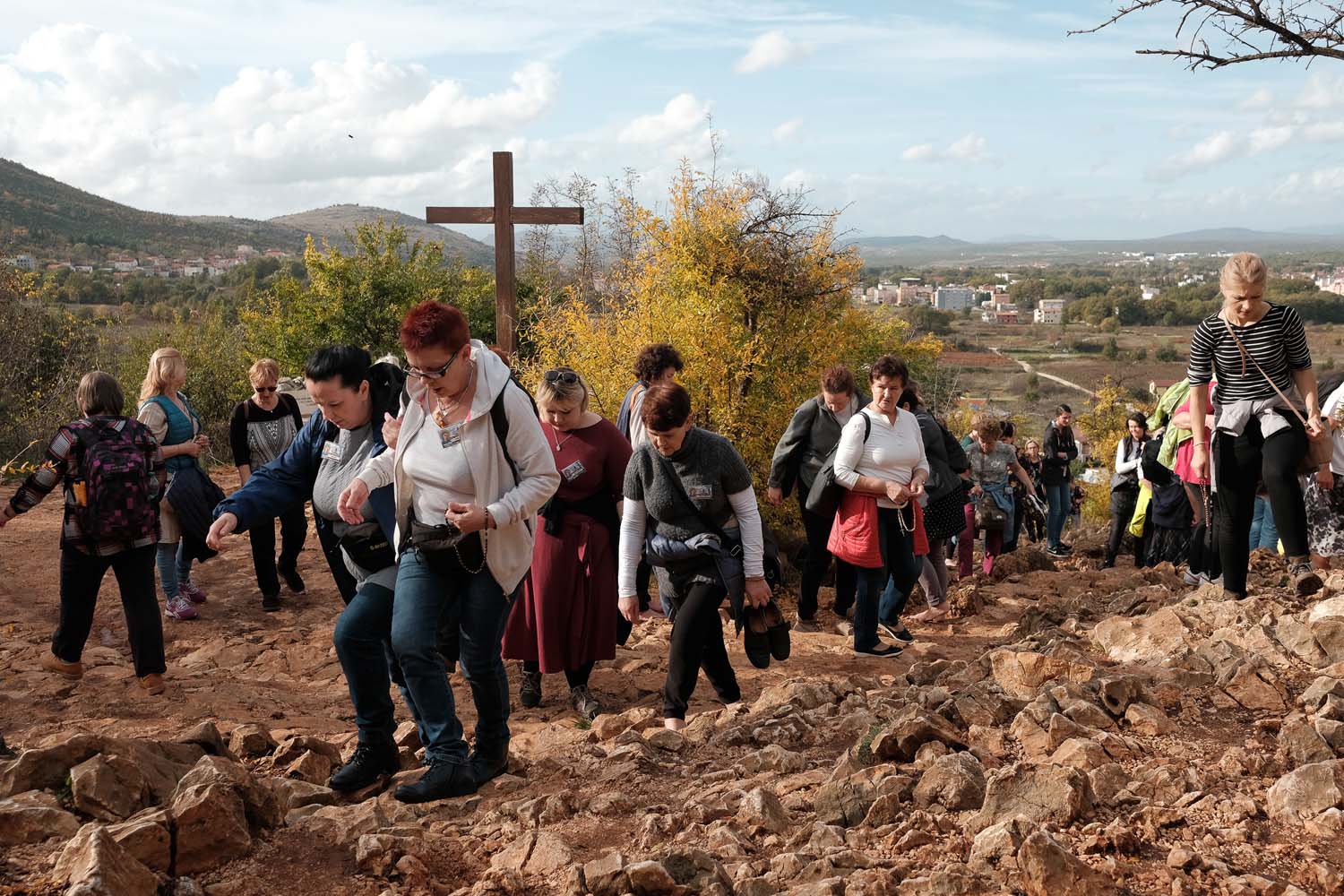
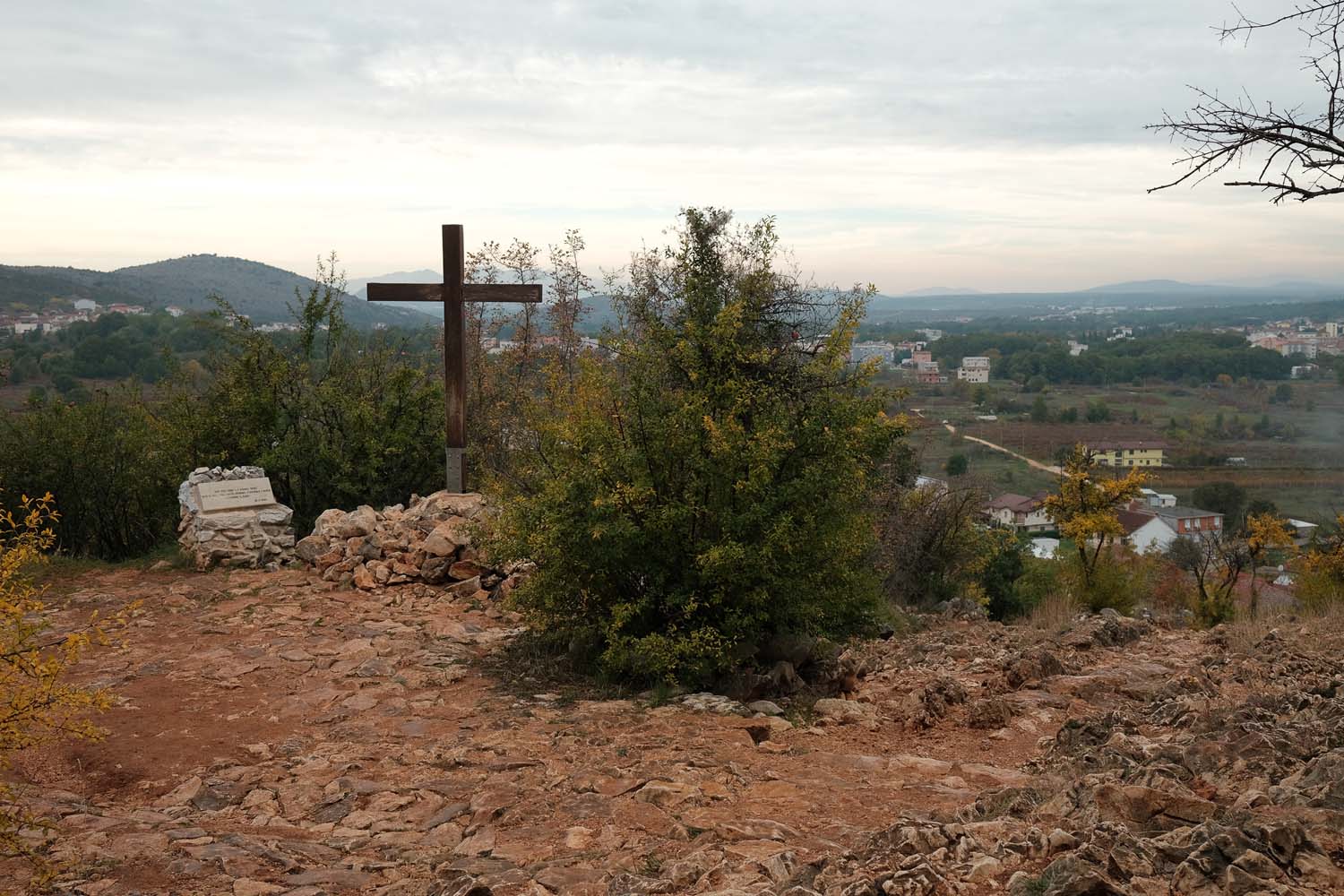
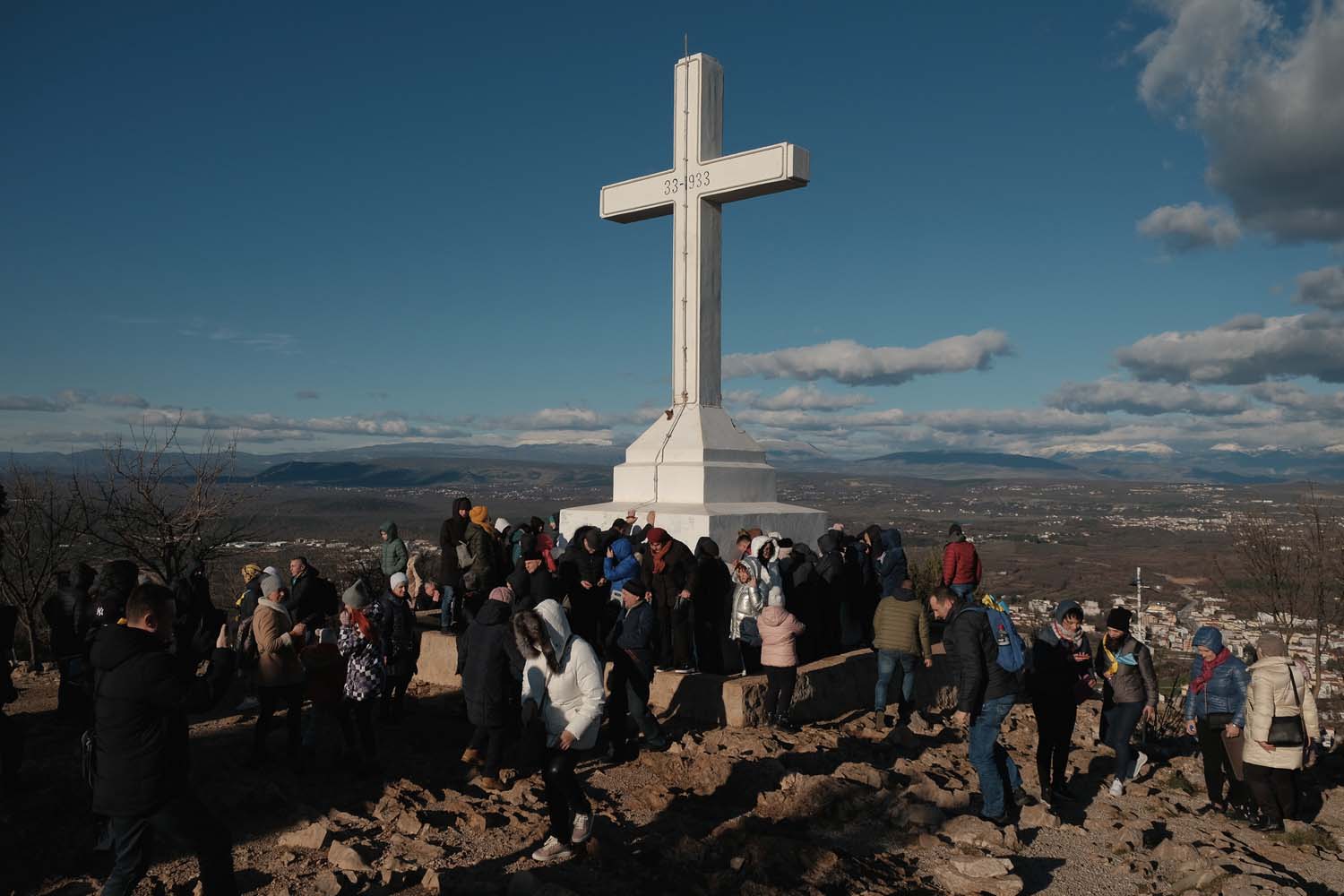
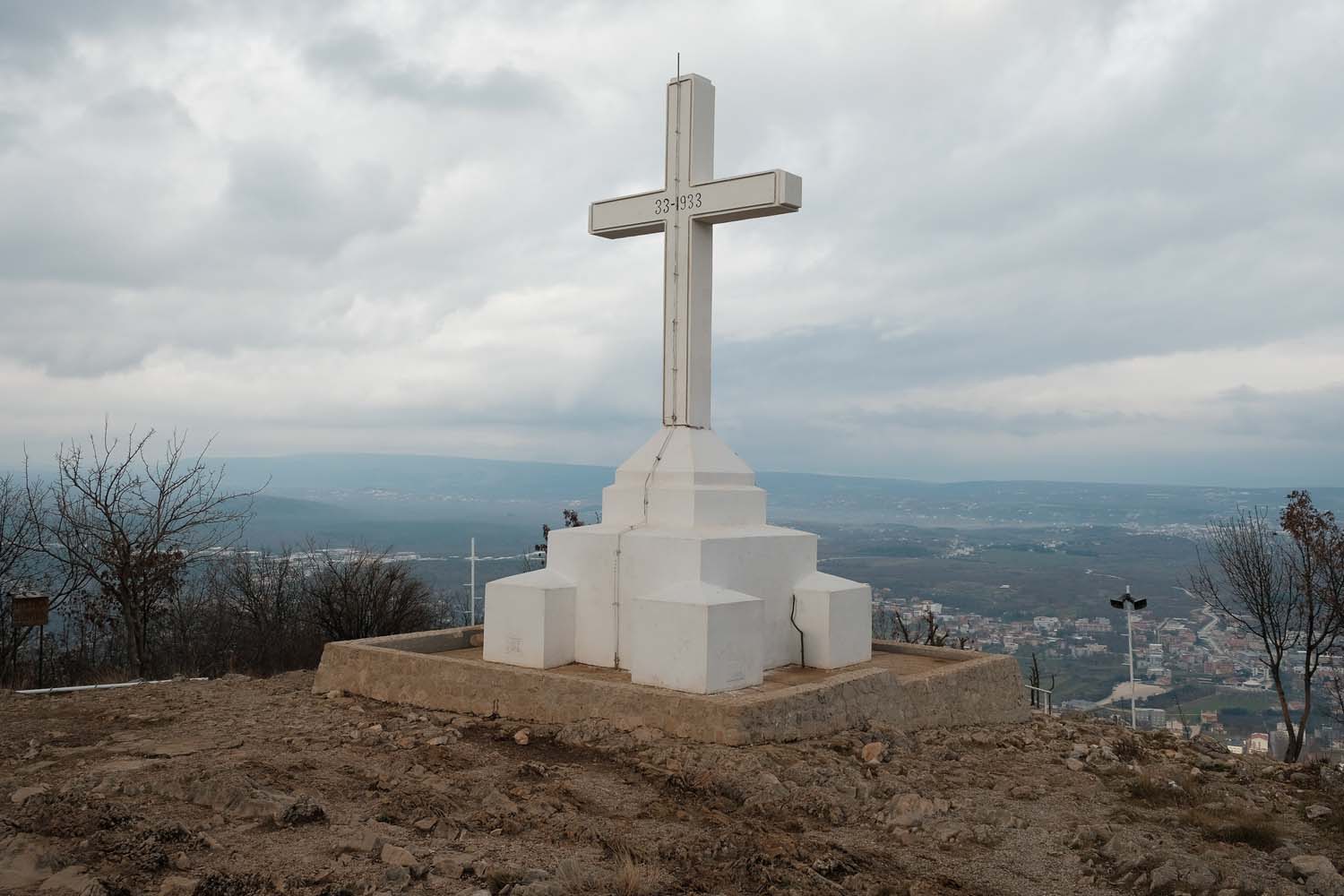
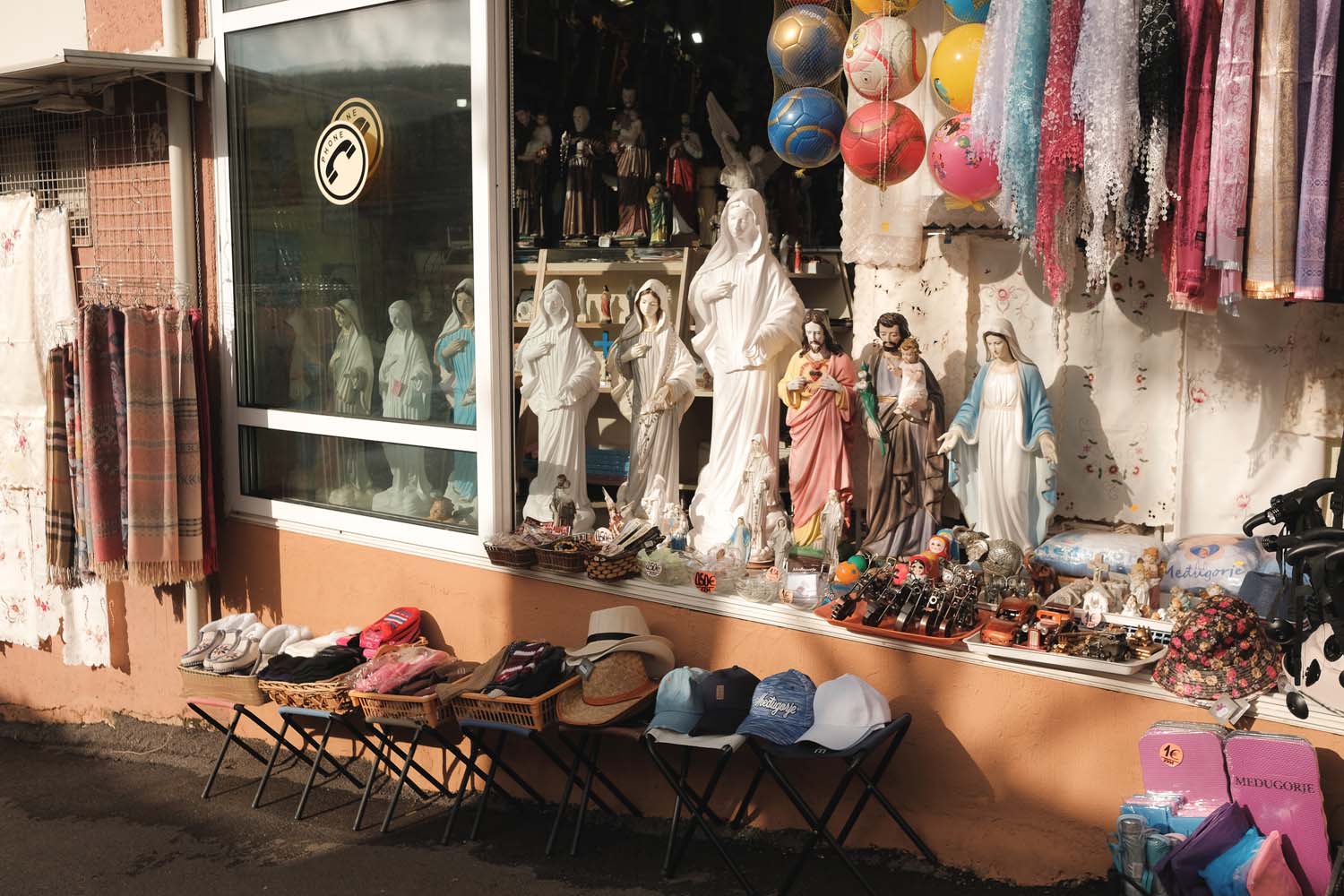
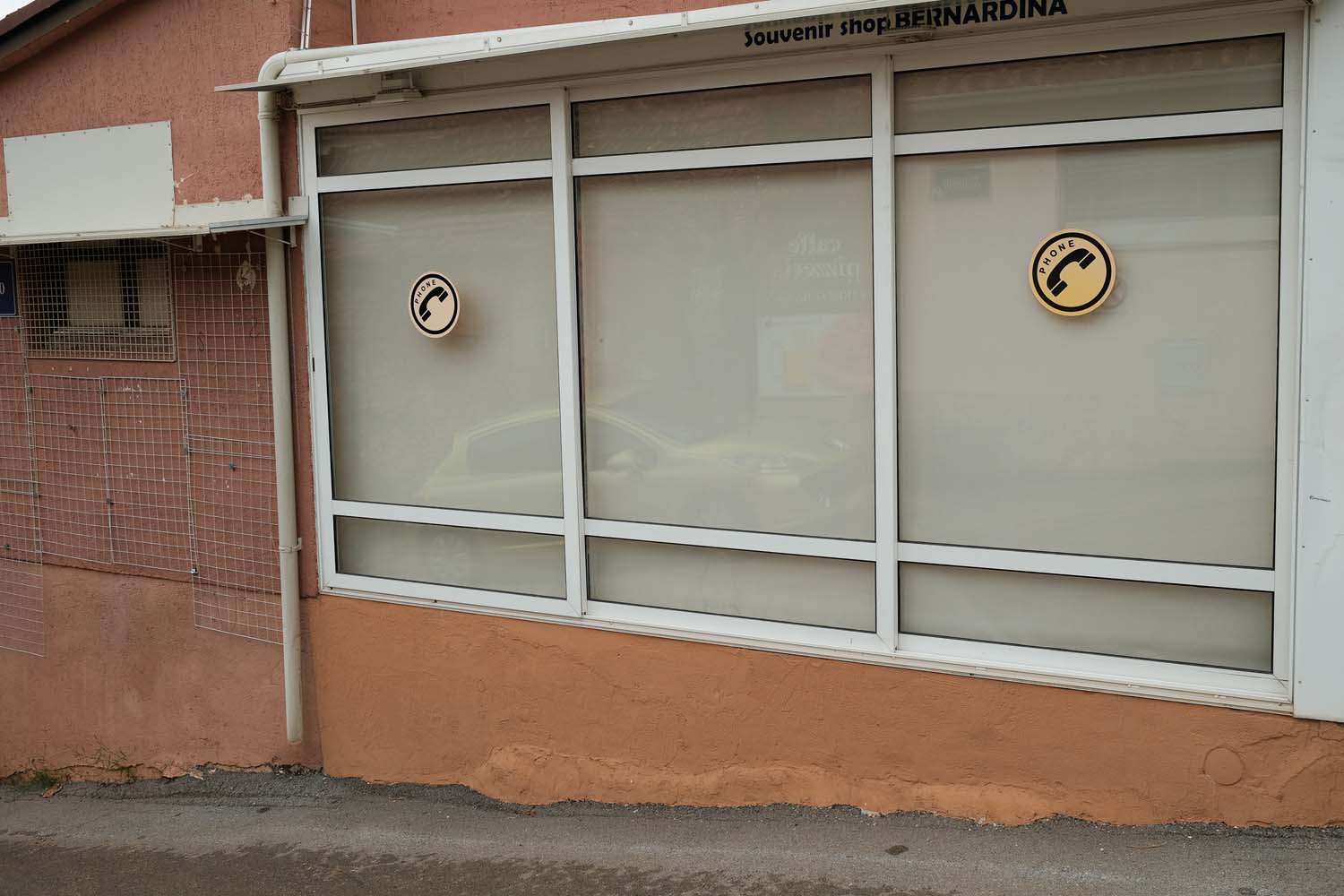
With the onset of Covid-19, Bosnia closed its borders to foreign visitors well into the summer months. “It was a strange situation around the country: even when lockdown restrictions had eased, without tourists there was no business,” says St. Oegger.
His most recent images show the devastating effects of the pandemic on the town’s tourism. “When I trekked up to the Apparition and Cross Hills, I only saw a handful of people compared to the hundreds or thousands I saw the previous year,” he recalls. The hotel where he stayed in 2019 was also closed. “I tried to get in touch with the owners but they might have been out of the country themselves. The previous summer they were completely booked up, as were most of the hotels in town — and there really are a lot of them.” But beyond the obvious lack of people, St. Oegger describes a noticeable “loss of energy”.
“What is unique about Medjugorje is that the tourism of the pilgrimage industry is pretty much the only thing keeping the local economy afloat. In Sarajevo, for instance, while tourism has dropped off, there are other industries keeping the city going, and other possibilities for people to find employment. This leaves things in a very precarious state if this summer isn’t going to be any different from the last and travel restrictions are still in place around the world,” says St. Oegger. Just as in the 90s, Medjugorje recovered from war, the town will be forced to rebuild itself once more.
Priests walk towards the summit of Mount Križevac.
A shrine on Apparition Hill.
A hotel catering to Polish pilgrims.
Empty seats in the overflow section of the Church of Saint James.
A statue of the Virgin Mary outside the Church of Saint James.
A line of souvenir shops near Apparition Hill.
Hotels in the town are usually booked up by large tour bus groups.
